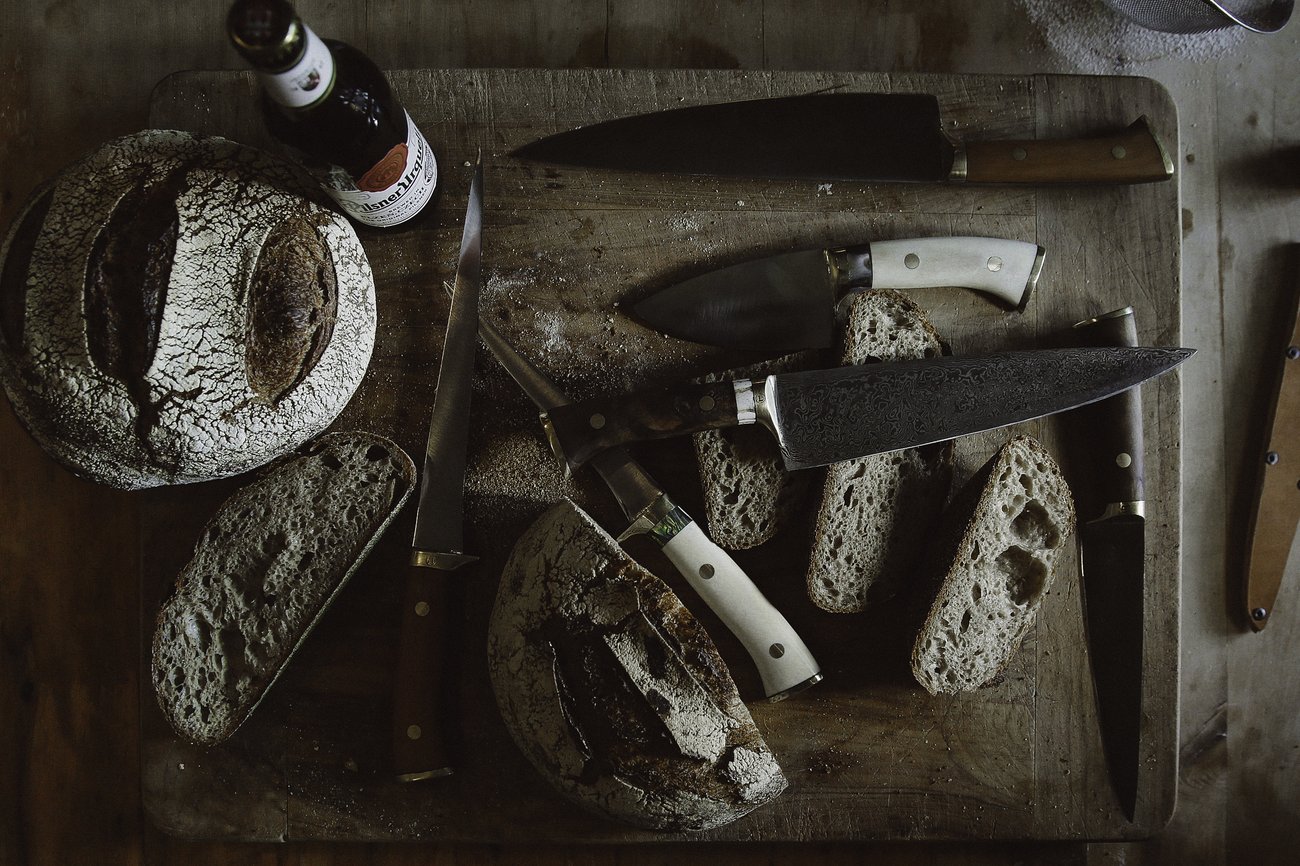Artisinal knife maker shares his secrets behind making the perfect cut

Twenty years later that first knife still holds its place in Lorimer’s kitchen however, despite his improved knowledge and skill, the question ‘what does a good knife look like?’ has yet to find a definitive answer.
“All over the world, in different cultures, people use completely different shaped knives for exactly the same thing and they think are perfect for that job, so I sort of discovered that there isn’t such thing as a perfect shape,” Lorimer says.
However, he does point out that within types of knives there are better shapes than others, like the French cooks knife, the standard chef’s knife that we use in New Zealand.
“There’s a particular curve in the blade which is good so when you rock it you don’t have to rock it too much to cover the whole area of the blade and chop what you are chopping.”
He goes on to say a fine edge is good for vegetables, whereas a thicker edge is good when dealing with something hard like bone because it reduces chipping.
Other design aspects, like the weight of the blade, come down to personal preference, which is why Lorimer predominantly sells custom knives. While selected retailers stock a range of Lorimer’s standard knives, most are made with the customers input. Discussions are had over what the knife will be used for, how heavy they want the blade and the preferred material for the handle, timber or bone.
 Image: Peter Lorimer, Lorimer Hand Made Knives
Image: Peter Lorimer, Lorimer Hand Made Knives
“Wood is a nice material to hold, it’s a nice material to look at, if its treated well it can last a long time as it’s relatively impervious to germs…. Bone I guess is a nice look, but it’s also heavy, which is a good thing particularly if you’ve got a reasonably heavy blade.”
Lorimer sources the bone from a local abattoir, which will otherwise be thrown away. “They save the bits of shin bone for me and when I’m lucky I chance across the odd bit of whale bone.”
Timber is gathered during trips across the West Coast where he picks it up from beaches and collects old fence posts from farmers. By generally using “whatever” he can get his hands on, handles have been made from beech, totara, tree fern, rata, swamp kauri and many others. If you have any wood lying round, he’s interested.
While he works to produce all the knives himself, Lorimer has people join him to work in his Omakau workshop, a chance for him to pass on his years of knowledge and skill.
“If anyone comes and asks me anything I like to share that information – that’s my philosophy. I learnt too much the hard way when I was learning and I thought it was stupid that there were people around me who were withholding information when I was learning, so I try and do the opposite when I can.”
When he started, it would take so long to make the different parts that Lorimer dreamed up machinery he would make in the future to help. However, by the time he had the wherewithal financially and the skill to build it, he no longer required it.
“I was good enough at doing it with what I had, I didn’t realize just how much I was learning as I was doing it, all those hours of grinding.”

Lorimer works on three knives at a time, with each taking a day’s work, sometimes longer if he makes his own steel.
“It takes a day or two to make a billet of steel where I fold different materials together, forge weld them and fold them so I get a couple of hundred layers of hard and soft steel.”
When he doesn’t make his own steel, Lorimer buys sheets of tool steel from Bohler Steels in Austria from which he cuts the shape of the blade. He then gets it to a reasonable finish with a belt sander, or linisher, before hardening it in a kiln set to 1050 degrees.
After the blade has cooled in air, Lorimer cleans it up to remove the oxides and take it a finer finish. Brass is used to make the guard and the hilt and timber or bone glued on to make the handle. Once the handle has been hand sanded and the blade polished up the knife is ready to be sharpened and boxed.
Making his product from start to finish is what makes Lorimer more than just a knife maker, he’s a craftsman.
“I guess that I’m making them all from scratch, I get raw materials and I work those raw materials to make an object that is functional and hopefully that looks good as well.”
While it seems Lorimer works to provide chefs with the tools for their trade, customers are everyday people with an interest in cooking or those after the perfect present. He says people have more of an appreciation for the handmade than they did a generation ago.
“I don’t ever remember people having nice knives when I was a kid but now people are more interested in that kind of thing.”
Lorimer too has another interest. Having perfected the craft of making knives he sees his future moving in the direction of gates and wrought iron, skills he has picked up from his blacksmith neighbour.
Already he has made and restored gates for local businesses and now has one on the go as a project for himself, but Lorimer assures his time will be split so he can continue to produce quality knives.






